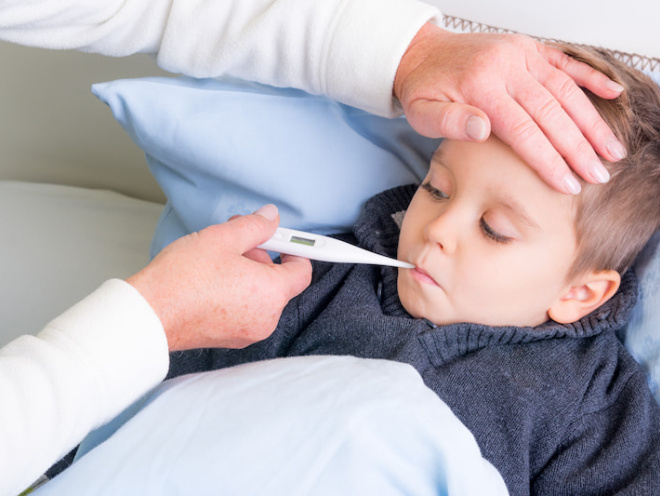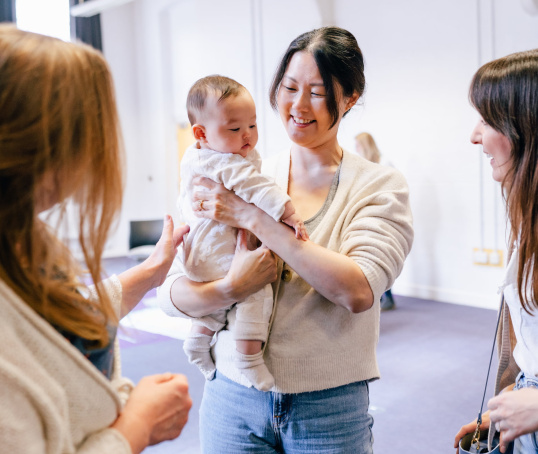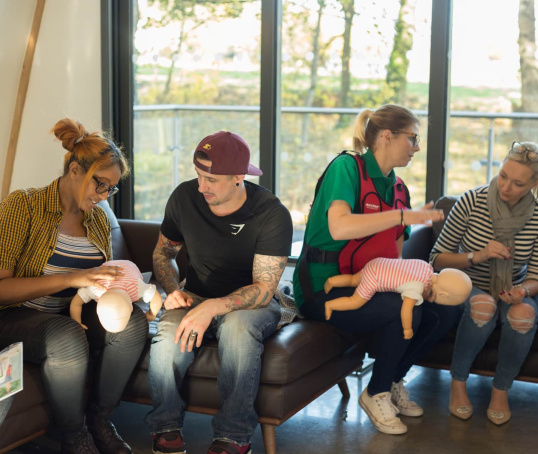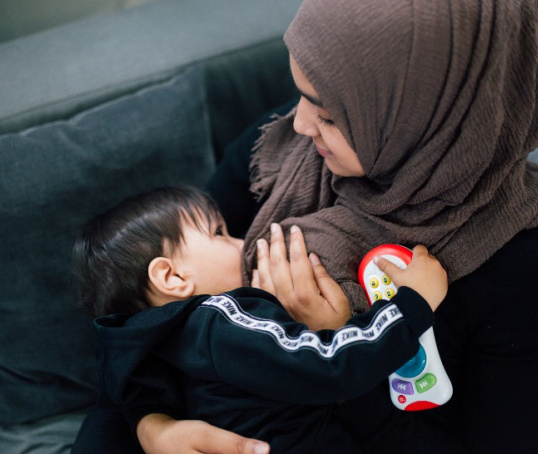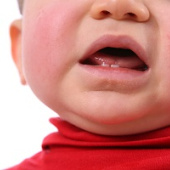Here we talk about what to do if you find a child who is unresponsive and not breathing
Finding your child unresponsive would be scary for any parent. Should you ever be faced with this situation, it’s important to remain calm and be confident in your actions. Familiarise yourself with the information below and don’t be afraid to use it should you need to in an emergency.
If you want to know what to do if a baby is found unresponsive and not breathing, read our article here.
Watch this short video to see what to do if a child (one year to puberty) is found unresponsive and not breathing.
1. Check for breathing
Tilt their head back and look and feel for breaths. If they are not breathing move onto step two. Tilting their head back opens the airway by pulling the tongue forward. Looking at their chest to see if it’s moving, and feeling for breaths on your cheek, will help you tell if they’re breathing or not.
2. Tell someone to call 999
If you’re on your own, carry out rescue breaths and chest compressions for one minute, and then call 999.
3. Give five rescue breaths
Tilt their head back, seal your mouth over their mouth and pinch their nose. Blow five times into the child. By blowing into their mouth you are topping up the oxygen levels in their blood. This is needed to keep their organs alive.
4. Give 30 chest compressions
Push firmly in the middle of their chest with one hand so the chest goes inward, then release. You’re acting as the heart by keeping blood pumping around their body and helping keep vital organs alive, including the brain. If you’re small or the child is large, you may need to use two hands.
5. Give two rescue breaths and then continue with cycles of 30 chest compressions and two rescue breaths until help arrives
Frequently asked questions about a child who is unresponsive and not breathing
How can I check for a response from the child?
Speak to them: call their name and ask them if they are OK. Tap their shoulders. If they don’t respond to you, or if you do not get a coherent response from them, treat them as an unresponsive child.
Why do I need to check for breathing on an unresponsive child?
It’s vital to check for breathing because this will indicate how you should help the child. You will need to take different steps depending on whether they are breathing or not. If they are breathing, they need to be put on their side to help them continue to breathe. If they are not breathing, they will need rescue breaths and chest compressions.
Why do I have to tilt their head back to check for breathing?
When a child is unresponsive, their muscles relax and their tongue can fall backwards and block their airway. Tilting their head back opens the airway by pulling the tongue forward. If someone’s tongue had been blocking the airway, then tilting their head back should pull the tongue forward, enabling them to breathe again. Sometimes, saving a life really is as simple as that.
How hard should I blow during rescue breaths?
You should blow until you see the child’s chest rise.
How long should I do chest compressions and rescue breaths for?
You should keep going until help arrives or the child starts to breathe.
Will I see an immediate response to my chest compressions and rescue breaths?
Many people think they will see an immediate response to chest compressions and rescue breaths. However, often you will not see any change at all in the child’s condition, but your actions may still be having a beneficial effect.
Will giving rescue breaths and chest compressions bring the child back to life?
The aim of rescue breaths and chest compressions is to give the child the best chance of survival by acting as their heart and lungs - buying vital time until the ambulance service arrives. The chance of restarting their heart by rescue breaths and chest compressions alone is slim. To restart, a heart usually needs an electric shock from an automated external defibrillator (AED).
What is an automated external defibrillator (AED)?
An automated external defibrillator (AED) is a machine that can be used to shock the heart back into normal rhythm. Defibrillators are found in many public places, such as train stations and shopping centres. Once opened, the machine gives full instructions on what you should do. It can be used on children over one year. If the child is aged between one and eight years old, use paediatric pads, placing one pad in the centre of the child’s back and the second pad over the centre of their chest.
If I press too hard during chest compressions, could I break the child’s ribs?
The rib cage of a young child is very flexible, so the risk of breaking their ribs by giving chest compressions is actually very small. However, it’s important to remember that ultimately the point of doing chest compressions is to keep the child alive. Without chest compressions and rescue breaths before the ambulance arrives, their chances of survival are much lower.
What if I make a mistake and deliver rescue breaths and chest compressions but the child is actually still breathing?
It’s not ideal but don’t worry – there’s no evidence to suggest you will cause any serious damage. You should stop delivering rescue breaths and chest compressions as soon as you realise they are still breathing.
What if I’m on my own and my child is unresponsive and not breathing?
If you are on your own, do rescue breaths and chest compressions for one minute and then call 999. Then continue rescue breaths and chest compressions until help arrives. If someone else is with you, they should call the ambulance immediately.
What should I say on the phone to the emergency services?
When you call the emergency services, they will prompt you with questions. In this case, it is important to tell them that the child is unresponsive and not breathing. The more information you can give the ambulance controller about the situation the better as it will help them prioritise your call.
I have heard the term ‘CPR’, what does it mean?
CPR is the term used to describe the combination of chest compressions and rescue breaths. It is short for cardiopulmonary resuscitation.
This article was written in association with Mini First Aid
Last updated June 2016
Further information
Our support line offers practical and emotional support with feeding your baby and general enquiries for parents, members and volunteers: 0300 330 0700.
NCT and Mini First Aid run First Aid courses for parents with babies and children on life-saving topics, such as CPR, stopping bleeding and what to do if your child is choking. Find your nearest course.
